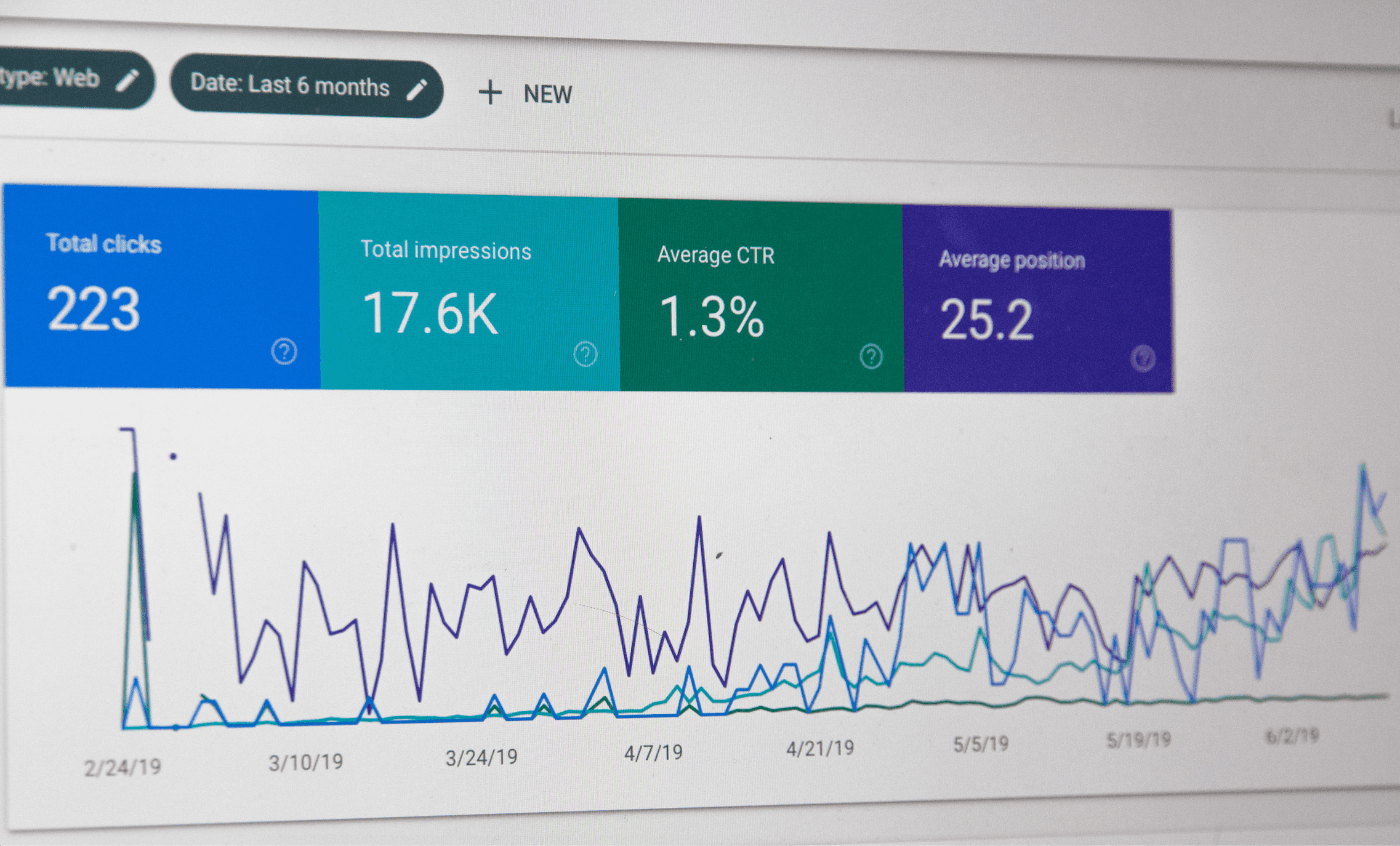The Ultimate Guide to Backlinking: 4 Easy Techniques to Boost SEO

Introduction
Ranking high and ideally on the first page of Google and other search engines is a goal coveted by all business owners looking to attract the maximum amount of exposure. How do you get there? The answer is by working diligently on search engine optimization, often referred to by its abbreviated name SEO.
Search engine optimization is the practice of increasing the quality and quantity of traffic to your website by making changes to your website content and creating connections to other, authoritative web pages. Search engine optimization encompasses a variety of tactics and requires time, energy, and patience. In this article, we are going to focus on one of the most important and effective methods of increasing your search position: link building.
Table of Contents:
1. What is a link?
2. What is a Backlink?
2.1 What is a no-follow backlink?
2.2 What is a do-follow backlink?
3.1 Broken link building technique
3.2 Guestographic link building technique
3.3 Link round-ups link building technique
3.4 Guest posting or guest blogging link building technique
4. Final Thoughts on Link Building
1.What is a Link?
If you have been on planet earth in the last 20 years, you are probably familiar with the term “link.” In simple terms, the definition of a link is an attachment or connection between two web pages on the internet. The attachment, often underlined and highlighted to ensure you recognize it is there, takes you to another page within seconds.
Links allow us to refer to and share other people’s writings, different websites, images and videos, and more on the internet. They are also called “hyperlinks.”
Links, however, are not just there for the convenience of humans! Search engine robots are the main consumers of links, as they use them to process information about new and current pages on the internet. The process by which search engine robots learn about websites through links is called crawling.
– Here is an Example of a Hyperlink:
• As a stand-alone link: http://www.wikipedia.org
• In HTML form: <a href=http://www.wikipedia.org>Wikipedia website</a>
• In-text form, this will appear as: “Wikipedia website”.
2.What is a Backlink?
A backlink is a type of link that connects one website to another website. For example: you have a website about your bakery. The New York Times writes an article where it calls your cookies delicious and links to your website. This is not just a link; it’s a backlink!
Backlinks must be from external websites. For example, if you link to another page of your website in a blog post, this is not considered a backlink.
Remember the search engine robots crawling around links? In their language, backlinks are like votes that prove your website is reputable and high quality. The more backlinks you get, the higher your ranking will be.
The only caveat is that some backlinks are more powerful than others. For example, if the New York Times links to your bakery website in an article, it holds a lot more weight than if your friend with five blog readers writes about your bakery and links to you. Why? Because the New York Times website receives a lot of traffic and has a ton of backlinks, which both tell the search engine robots that their website is important and should be ranked highly. If your website is related to theirs through a link, you must be important too!
The quality of a backlink is one of the most important things to consider when creating backlinks. If you are getting hapless and irrelevant links, this could hurt your search engine ranking.
Beware of websites and people offering to sell loads of backlinks for cheap – they must have high authority to rank. You can check a link’s authority on this website. Just paste in the link, and you will see a “domain rating” measured from zero to 100, which is the highest possible rank. Try to get links from websites with a score of at least 20.
2.1 What is a No-Follow Backlink?
A no-follow backlink is a backlink that does not pass along page authority to a website. No-follow back linking is a tool that Google invented in order to combat marketers and other individuals’ attempts to hack their search engine ranking algorithms. People did so by spamming website comment sections, social media posts and comments, forums, etc. with links to try to increase search ranking. For example, if someone mentions your bakery website on Facebook, you will not receive Facebook’s high authority to help you rank: in fact, it won’t affect your search ranking at all.
Here is an Example of a Hyperlink with No-Follow Properties:

These links do not impact search engine ranking because rel=”nofolow” HTML tag tells the search engine to ignore this link; in other words, search engine bots will not crawl these links.
While this might seem annoying because no-follow makes it harder to build backlinks, it is an overall beneficial policy. No-follow links protect internet users and business owners like you from spammers dominating the search rankings.
If you plan on purchasing backlinks for your website, make sure that they are “Do-Follow Backlinks,” which we will discuss in more detail in the following section.
How to Discover Whether a Link is “No-Follow”?
There are two ways to check a link to discover whether it is a no-follow backlink or not. The first is manually, and the second is through a Chrome extension.
-Manual Method to Find No-Follow Links
¬ STEP 1: Find a link that you want to identify.
For example, I want to identify this link attached to “Nofollow by Igoware.”
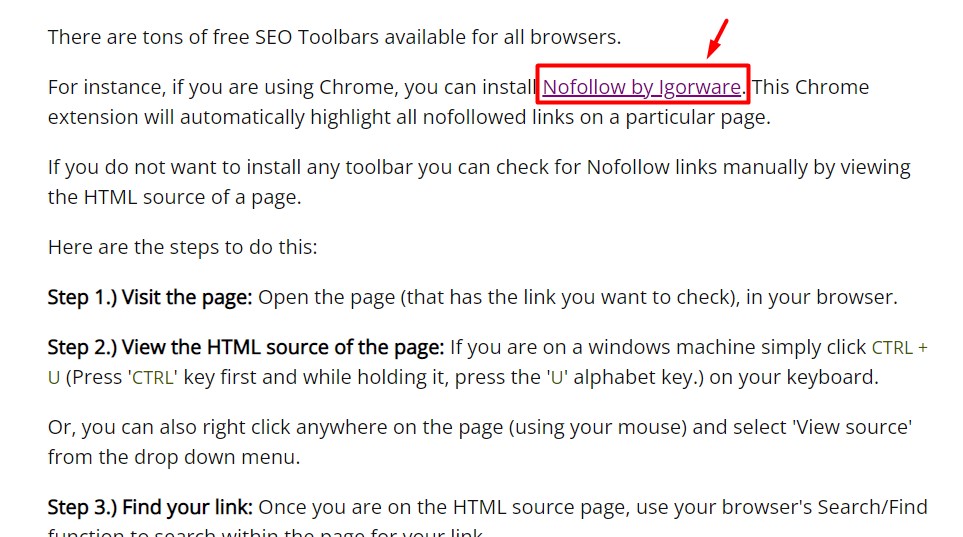
¬ STEP 2: Open the link that you want to identify and copy the address of that link.
¬ STEP 3: Right-click on your browser’s page and select view source page option below or press short keys Ctrl + U.
¬ STEP 4: press ctrl + F and past that address of the link.
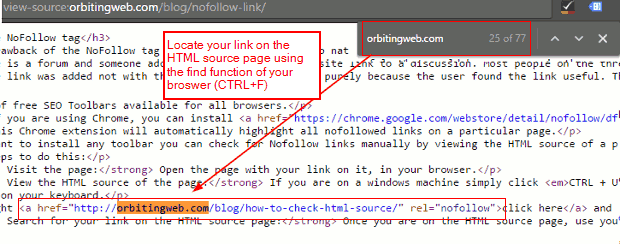
-Chrome extensions to find No-follow links
Alternatively, you can identify no-follow links within seconds with the help of the Moz SEO toolbar chrome extension.
-Here is the step by step guide.
¬ STEP 1: Install the “MOZ” SEO toolbar extension and activate it.
![]()
¬ STEP 2: Click on the icon of pencil available at the left corner of the MOZ bar, it will give you the option to highlight the all no-follow links.

-Sources of Links that are Almost Always No-Follow
The following sources almost always provide you with a no-follow hyperlink:
• Blog Comment Sections
• Social Media Platforms
• Forums with User-Generated Content
• Quora
• YouTube
• Wikipedia
• Twitch
• Medium
2.2 What is a Do-Follow Backlink?
Simply put, do-follow backlinks are the opposite of no-follow backlinks. They pass domain authority to your website, and they do not contain the phrase “no follow” within their hyperlink structure.
By default, all links are “do-follow,” unless they are otherwise categorized by search engines. You can assume that for the most part that if the link is coming from a source other than those listed above, it is a “do-follow” link.
Search engine robots use “do-follow” links as a way to learn about your website’s content. They are like clues to getting to know how to classify your website. Further, as mentioned, the more authority a link has, the greater its impact on your search engine ranking.
-Here is the example of a do-follow link.

The method of finding do-follow links is same as no-follow links.
3. Link Building Techniques
Now that you know what link building is, let’s dive into how to create an effective strategy to increase your search engine ranking.
High-quality link building is a necessity, as Google and other search engine rankings are, in essence, built off of the information links provide bots with. In deciding which techniques to utilize, remember that buying or creating mass or spammy links can actually hurt your ranking rather than help bolster it.
– Here are the four best techniques for high quality link building:
• Broken link building technique
• Guestographic link building technique
• Link building with link roundups
• Guest posting or guest blogging link building technique
3.1 High Quality Backlinking Technique #1: Broken Link Building Technique
Broken link building is the most useful method to build powerful links. However, it does require a fair amount of effort and time.
¬ STEP 1: Find a broken link related to your industry
You can find broken links through various chrome extensions like “broken link checker” and “check my links”.
– Broken link checker
First, install the “broken link checker” in your google chrome browser.

Then, open a page related to your industry, and click the icon of broken link checker (found at the top right corner of the browser). It will highlight all the broken links present on a given page.
¬ STEP 2: Once you find a broken link write some relevant content to replace the “broken” content.
Make sure your content is completely adjustable and very similar to what would have been on the broken source.
¬ STEP 3: Contact the owner of the site through email, and let him or her know that this particular link is dead (broken) and ask him to replace it with your content.
– Here is the email template that we use to do so:
Hi [Name of the Blog Owner]:
I am a regular reader of your blog, I love what you are posting, especially your [article with broken link].
However, I found a broken link shows a page with an error.
Here is the link [anchor text of broken link].
I just created a piece of content on this topic, which might be useful or your audience. Perhaps you can replace said broken link with this new content.
Let me know what you think.
Best Wishes,
[your name]
NOTE: Keep in mind if you have high-quality and relevant content, you have a higher chance to receive a backlink. Otherwise, no one will want to link to your content.
3.2 High Quality Backlinking Technique #2: Guestographics Link Building
The guestographic link building technique is the latest and most favorite link building technique of all SEO experts, including Brain Dean, the founder of Backlinko, and Neil Patel.
Before talking about the Guestographics, link building technique, let’s first discuss the definition of an infographic.
What is an Infographic?
An infographic is the visual and graphical representation of text information with a collection of symbols, charts, and minimal text.
Here are examples of infographics:
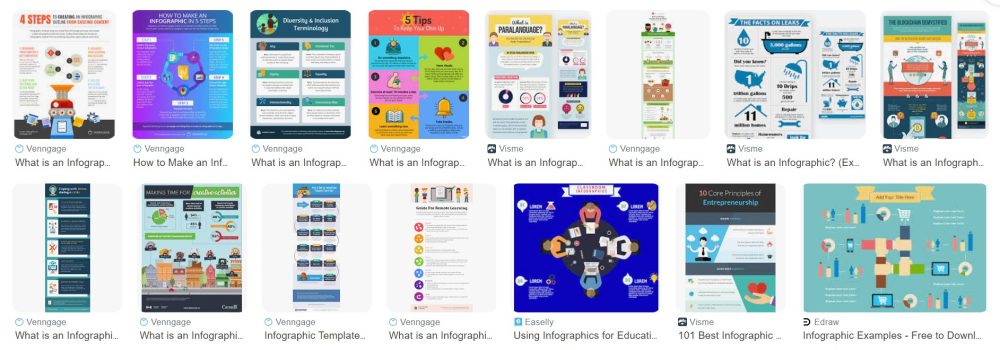
Infographics provide on-lookers with an easy, visual expression to understand a complex topic. Today, they are very popular on blogs and social media, where people seek to comprehend information quickly and efficiently.
Now, let’s talk about how to create backlinks using infographics.
There is no short-cut to creating high-quality guestographic backlinks. Like any great strategy, it will require time and your best effort.
¬ Step 1: Make an attractive and eye-catching infographic, and publish it on your website.
There are over a dozen free and paid ways to make infographics.
Free ways:
If you are a graphic designer, you can easily make infographics with the help of Adobe Illustrator.
If you are not a graphic designer you can make infographics from templates on various online sites like Piktochart, BeFunky, Canva, and Biteable.
With these tools, you can use drag and drop features to create engaging infographics.
Paid ways:
Fortunately, infographics are not very expensive if you prefer to hire someone to create an infographic for you.
Check out Fiverr. Fiverr is the most popular freelancing site through which many people offer services around the world.
You can purchase an infographic on Fiverr by hiring a professional graphic designer to create an infographic for you.
If you can’t find anyone on Fiverr that you like the work of, check out UpWork or Guru to find other graphic design experts.
What should a good infographic consist of?
The design of your infographic should be very good to acquire quality guestographic backlinks.
These are the following important things you should make sure are in your infographic:
1. Relevancy:
Your infographic must be related to the topic at hand. If the graphic is not relevant to the content on the website you contact, it will not garner you backlinks you desire.
2. Concise with great information:
Your infographic should cover all of the important information within the content it is meant to represent. You must be able to pick out and summarize the most relevant information.
Most SEO Experts recommend that an infographic should not have more than 10 data points because a normal person cannot digest or remember infographic with 40-50 data points.
Here is a perfect example of a good and concise infographic:
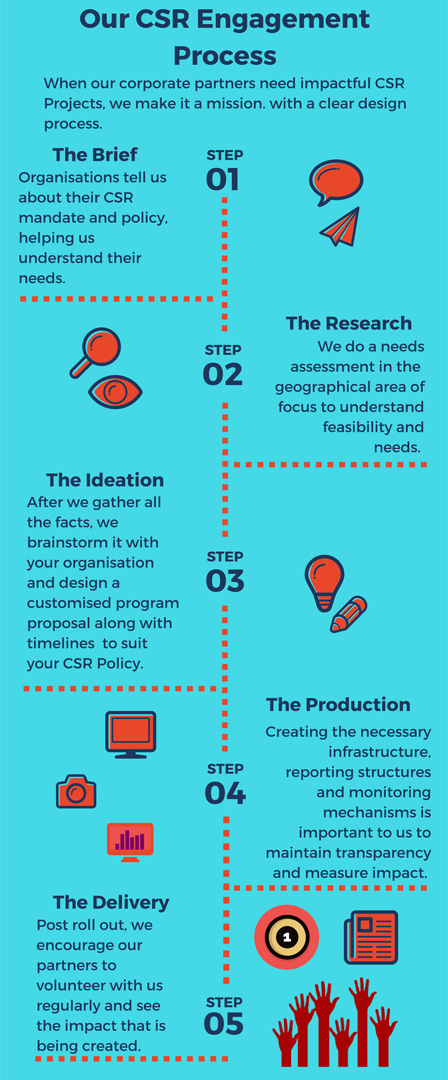
The infographic is attractive, easy to read, and provides just the right amount of information necessary to understand the topic.
¬ STEP 2: Find post related to your infographic
Once you publish a good infographic on your site, your second step is to find a relevant post where the infographic may be helpful.
For example, let’s say I made an infographic related to off-page SEO (link building).
To find the relevant content I just google some terms like:
• CSR Engagement
• CSR Engagement Process
• Etc.
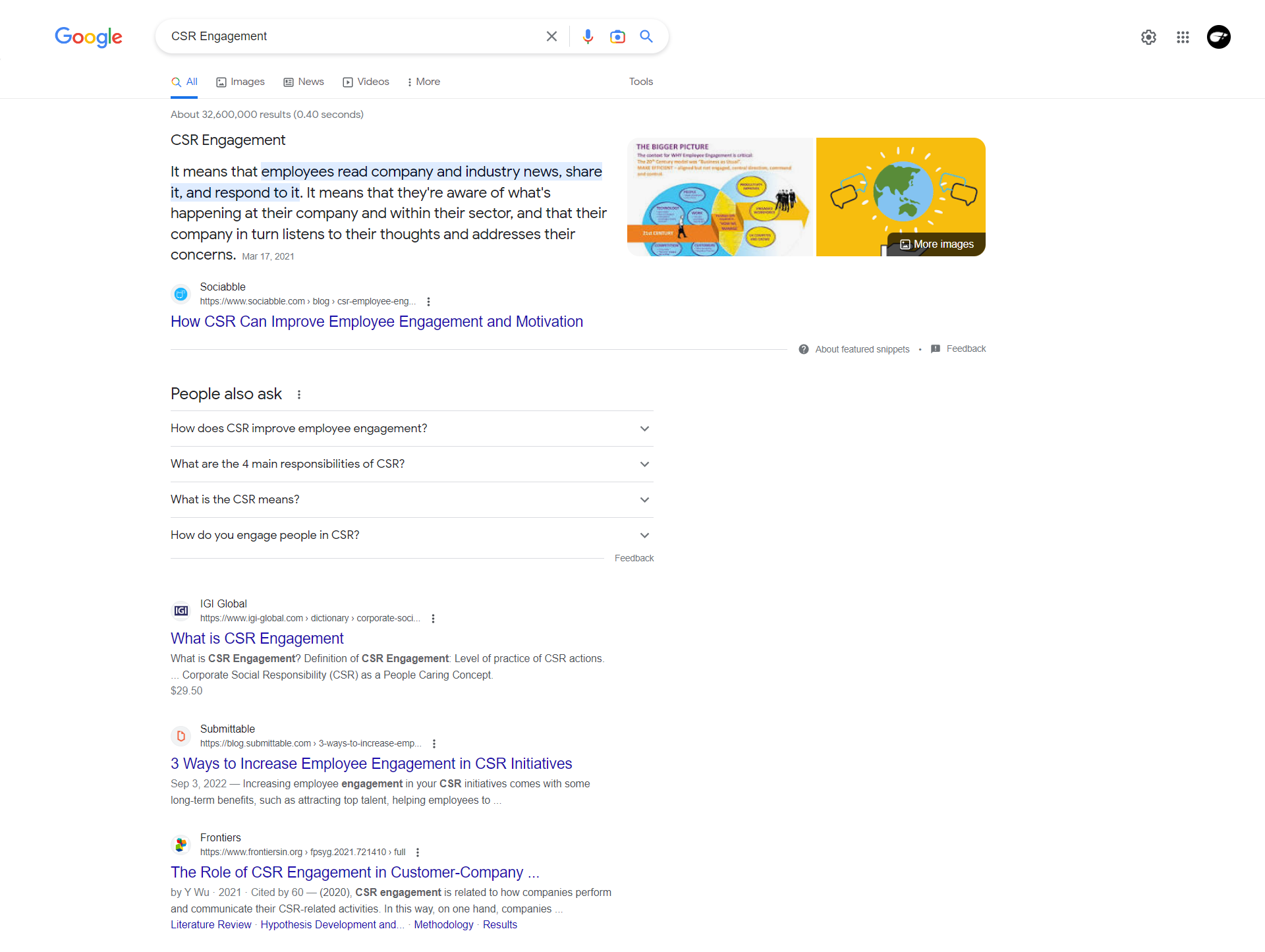
In doing so, I found plenty of pages related to my infographic.
¬ STEP 3: Contact the owners of the website and show them your infographic
Once you found the posts relevant to your infographic, contact the owners of the sites through email.
– Here is the email template we use to reach out to website owners:
Hello [Name of Website Owner],
I was researching about the advanced off-page SEO and found your post [relevant post]. I enjoyed it very much; thank you for the great information.
I just made an infographic related to advanced off-page SEO.
I thought this would be a great addition to your post.
Please let me know what you think.
Best Wishes,
[your name]
¬ STEP 4: Offer free mini “guest post” as a gift.
Offer a mini guest post of 300-500 words along with an infographic. I know this is a time-consuming task, but this may increase the chances of getting a backlink.
Remember when you add value to that person’s site he/she will gladly give you a backlink.
3.3 High Quality Backlinking Technique #3: Link Building with Link Roundups
Before we dive into strategy on how to create quality backlinks with link roundups, let’s discuss what a Link Roundup is.
What is a Link Roundup?
Simply put, link roundups are an annual, monthly, weekly, or daily list that organizes the best content in an industry during that time period.
For example:
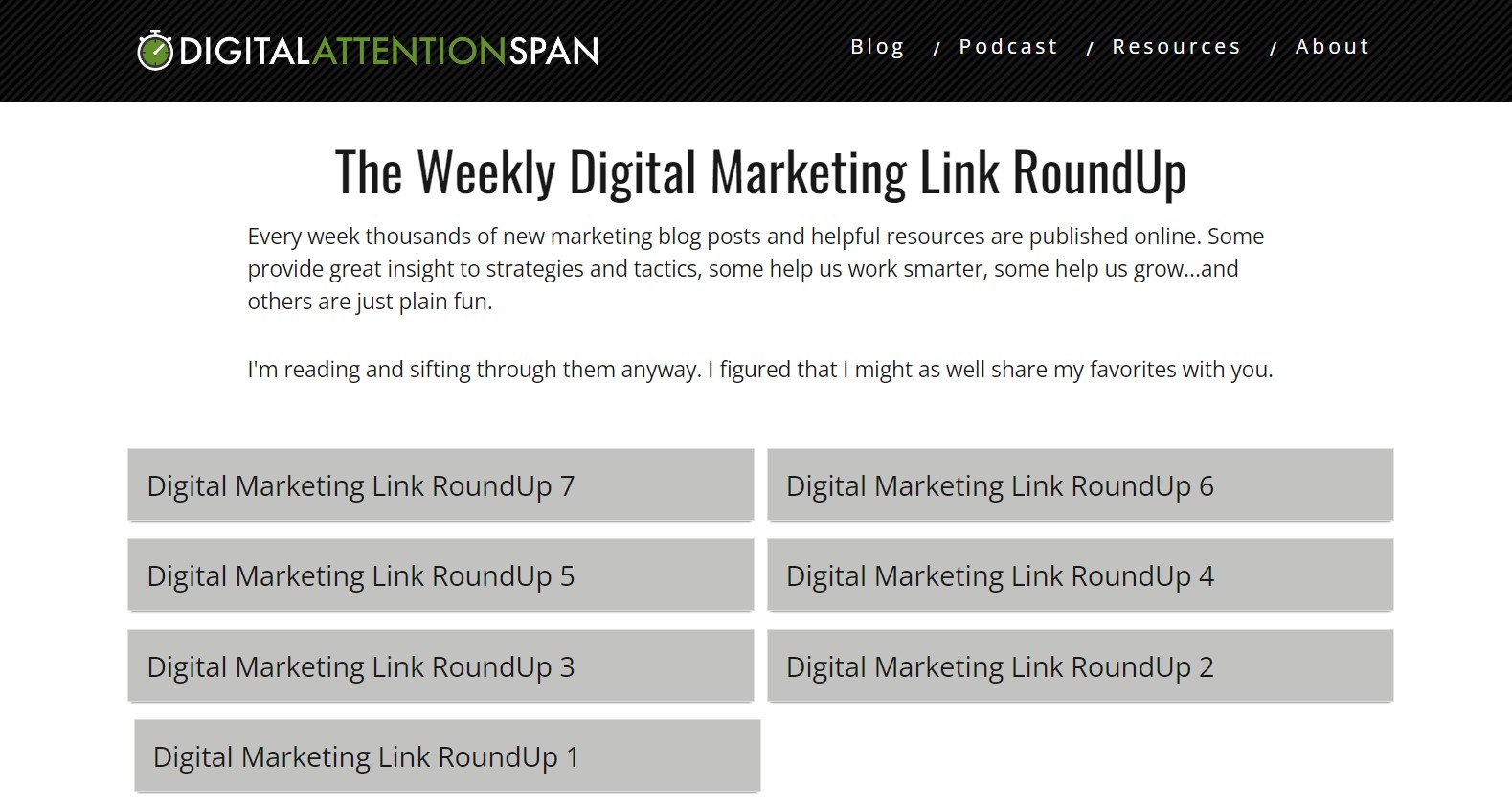
This is the weekly discovery of the best content related to Digital Marketing by Digital Attention Span.
-Here is the step by step guide on how to find link roundups and build links using this method.
¬ Step 1: Create valuable and high-quality content
High-quality content is the first and most important step to receiving links from roundups.
Think about the link roundups as an organized list of the very best content online about a given topic. Every webmaster or site owner is on the hunt for relevant and engaging content.
Don’t worry if you are rejected by a webmaster. Modify your content and pitch again. Hopefully, with good effort, you will receive high quality links.
¬ Step 2: Find your desired Link Roundups
Once you have valuable content with great information, now your task is to find a website in your industry that posts link roundups.
There are plenty of websites that post link roundups every week or month, but it requires a little bit of effort on your part
– Finding link roundups through Google Search operators
As we know, Google will help us to find all link roundups related to an industry.
– Here is the list of google search terms to use in search of Link Roundups
• “Keyword” + “weekly roundup”
• “Keyword” + “link roundup”
•“Keyword” + intitle:roundup
• “Keyword” + “weekly link”
• “Keyword” + inurl:roundup
For example, if I want to find link roundups in the fitness industry
I just search “fitness” + “link roundup”
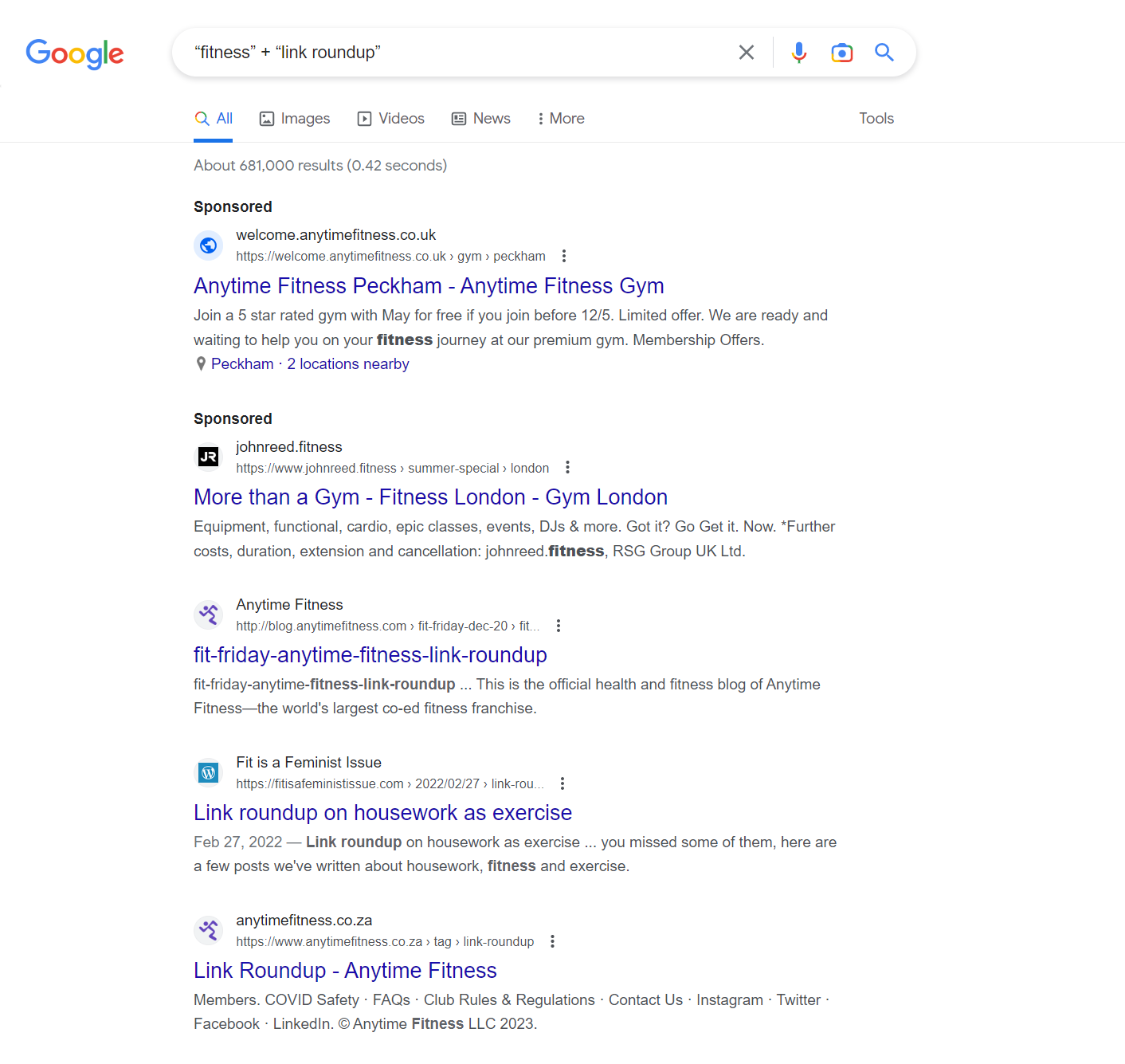
There are plenty of sites that do a link roundup every week. However, we must find the most up to date link roundups to ensure the author is active and still creating weekly lists.
How can we find an active link roundup? We can filter the results.
First, click the tools at the upper right corner of the search bar and filter the time. I recommend selecting pages published in the “past week”.
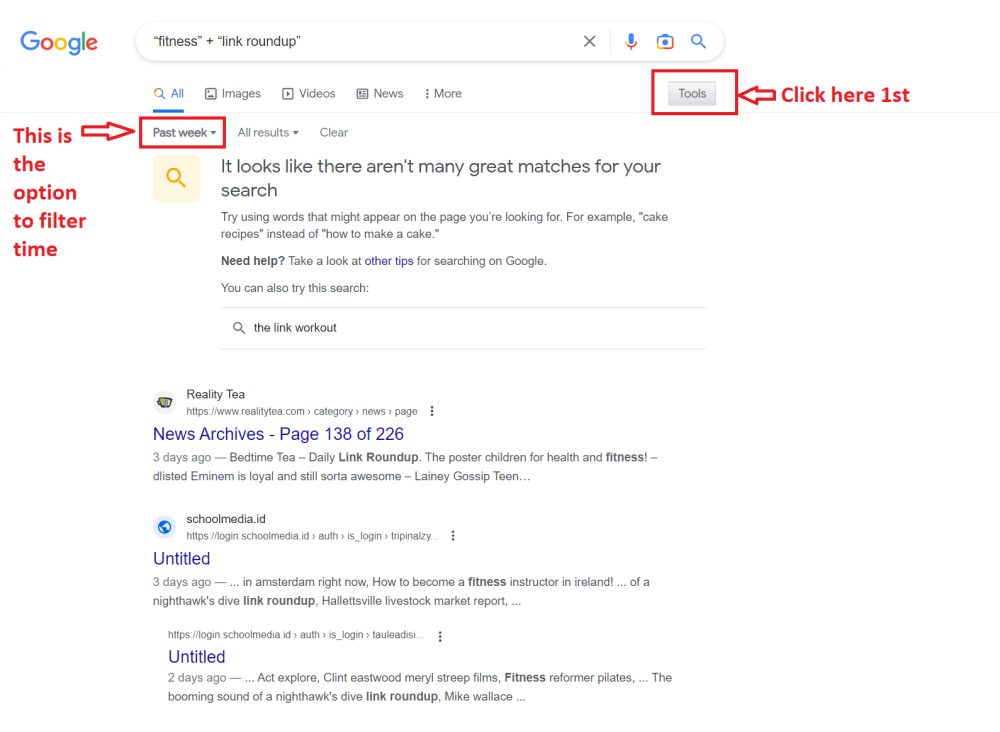
¬ STEP 3: Show your content to the website owner or webmaster
This is the most crucial step of link building through link roundups. Once you find a ton of active roundups in your industry and you have great content, now your task is to pitch your content to webmasters.
First, find appropriate contact information. Every website has contact us page contact webmaster through contact us page or find the email address which is usually available on the “about us” page.
Make sure your email is concise and personalized. It shouldn’t appear to be spammy.
– Here is the email template we use to reach out to website owners:
Hello [Name of Website Owner],
I am a huge fan of your weekly [relevant industry] roundups.
I just published a piece of content about [relevant topic], that I believe may be a good fit for your next post.
Please let me know what you think.
Best Wishes,
[your name]
3.4 High Quality Backlinking Technique #4: Link Building through Guest Posting (Guest Blogging)
Link building through guest posting or guest blogging is a great way to build powerful backlinks.
If you use guest posting correctly, you can skyrocket website traffic month over month by building powerful backlinks.
What is guest posting or guest blogging?
Guest posting or guest blogging is the process of publishing your content on other websites related to your industry to get a backlink as a reward.
As an exchange for content writing, the webmaster attaches 1 or 2 links of guest writer’s website in the guest post through which guest writer may get traffic and attract the webmaster’s audience.
– Here is the step by step guide to building links through guest blogging.
¬ STEP 1: Find Websites Related to your Industry which Accept the Guest Posts
Find websites in your industry that accept guest posts.
Google the following keywords to do so:
• “Keyword” + “guest post”
• “Keyword” + “write for us”
• “Keyword” + “submit a guest post”
• “Keyword” + “guest post guidelines”
• “Keyword” + “This post was written by”
• “Keyword” + “become an author”
• “Keyword” + “guest article”
• Intitle: guest post guidelines
For example, I want to find a list of fitness websites that accept guest posts.
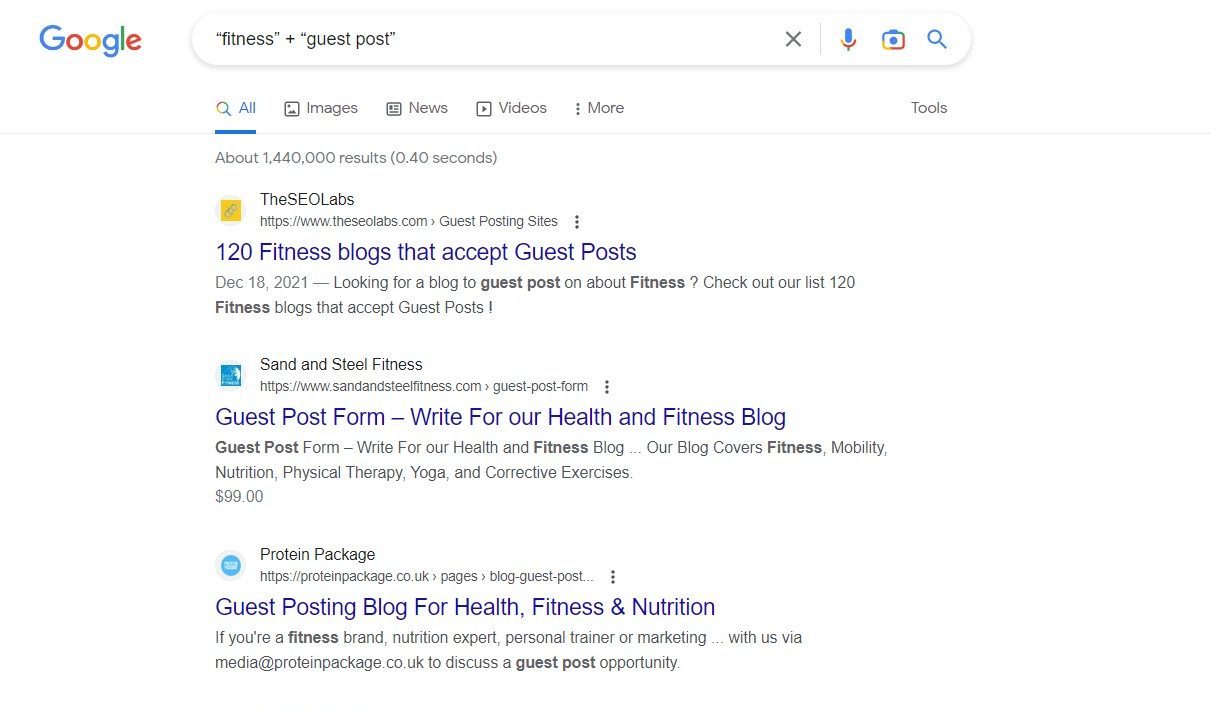
These are websites that accept guest posts related to the fitness industry.
¬ STEP 2: Make a Spreadsheet of these Websites
Making a spreadsheet of the websites will help you to work in an organized way.
¬ STEP 3: Filter the List of Websites
Before submitting a guest post, make sure the website has the following qualities:
– Domain authority: According to most SEO experts, selecting a domain with DA less than 40 is a waste of energy and time because it will not give you a high authority backlink.
Select the domain which has DA more of more than ideally 40 and at least 25. You can easily find DA of any website through Moz free extension.
![]()
– Analyze the content of the website: Scan the content of the website with readers’ point of view in mind and determine whether the content of the website is valuable for users or not.
• Does the webmaster of the website add content on a daily, weekly, or at least monthly basis?
• Is the content clear and understandable?
• Are you intrigued enough to share the content with your friends through social media?
If you answered yes to these questions, then your guest post will be put to good use if shared on the website.
– Check out the organic traffic of website: the more traffic there is, the better the chance that people will read and share your article.
You can check out the traffic of any site through a free tool called “Ubersuggest”
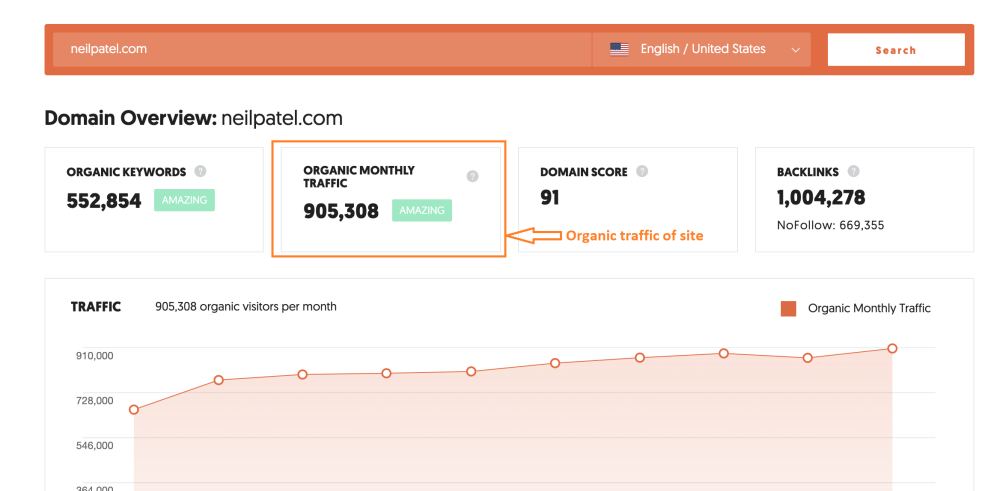
¬ STEP 4: Read the Guidelines of Guest Post Submissions
Some websites are very sensitive about guest posts.
Many of these webmasters publish guidelines about how to create successful guest post submissions for their websites. This might include word count, tone and topic suggestions, and contact information.
¬ STEP 5: Generate Content ideas
Once you filter out the website now, it’s time to brainstorm and generate content ideas.
Doing research about the current trends and viral news in your industry is a helpful way to do so. Then, prepare a minimum of four titles on different topics to offer the webmaster so that they have a choice of which title to select.
¬ STEP 6: Submit Your Post to the Webmaster
– Here is the email template we use to reach out to website owners:
Hello [Name of Website Owner],
I am a fan of your [website or blog], and I would love to contribute a guest post for your use.
[Here are four topics I have written about that I can tailor towards your publication.]
Please let me know what you think.
Best Wishes,
[your name]
¬ STEP 7: Write a Piece of Valuable Content
After getting approval from webmaster, your second step is to make valuable content that clears the intent of users.
I suggest you do some homework.
– Read some posts on the webmaster’s site.
Read at least 6-7 posts of owners site and analyze the structure of the content. Filter through the best posts with high social shares and comments. This will give you an idea to create engaging content for the website’s audience.
– Analyze the writing style and structure.
Analyze the writing style of posts on the website. This will help you to find the correct tone to write with. Usually, the website will post content utilizing formal language or conversational language.
When you’re ready to write, follow these rules:
1. Write the guest post according to the guidelines of the webmaster.
2. Write with the same structure as other posts on the webmaster’s website.
3. Your guest post should be grammatically correct.
4. Write SEO-optimized and unique content.
5. Your guest post should be engaging.
6. Attach a link with your website in the guest post.
7. Proofread!
¬ STEP 8: Share Your Guest Post to your Social Platforms
Once your guest post is published, your task is to promote it through your social platforms.
4. Final Thoughts on Link Building
Imagine you are a great dancer, but you only dance in a dark room alone. How can you be discovered? Will anyone ever see you? You must express yourself in front of an audience in order to be discovered.
Similarly, if you have a great business or create high quality content – it deserves to be seen. Link building strategies help you to rank on Google and other search engines and reach new audiences.
Natural, not spammy, link building techniques like those outlined in this article will help you to organically skyrocket your traffic and search ranking.
Be patient and implement these tools to the best of you ability. You will begin to see the results over the course of just a few months.








